
When a conventional large screen is no longer sufficient, a video wall is the perfect solution for displaying content impressively on enormous screen areas. However, a reliable video wall requires more than just good hardware — it also needs powerful, user-friendly software.
FrontFace is a powerful yet user-friendly digital signage software that allows you to easily control any kind of video or LED wall!
LED Matrix Videowall
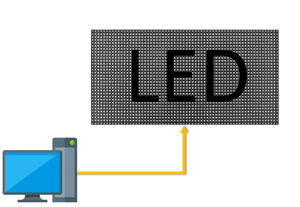
LED walls consist of many RGB LED modules that come together to form a large pixel area. They are used wherever conventional displays reach their technical or economic limits, particularly outdoors. They are typically controlled via PC-based units with screen capture capabilities.
FrontFace is perfectly suited for this type of control: The player can be operated in windowed or full-screen mode. The size, position, and scaling can be adjusted as needed to precisely transmit the desired image area to the video wall.
Segmented or Multi-Screen Video Wall
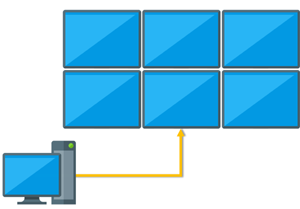
A segmented or multi-screen video wall is suitable for creating a large display area with multiple screens. Special multi-head graphics cards or video wall controllers address multiple screens as one large area, just like a single, large screen.
Special Features:- Any number of screens connected to one player PC, displaying exactly the same or different content.
- Treating the video wall as a single large screen.
- Use playlist page layouts with individual divisions (e.g., 2×3) if you want to show different content in each segment.
Special Hardware for Video Walls:
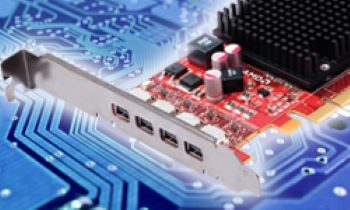
Multi-Head Graphics Adapters
Special graphics cards from vendors such as Matrox, ATI and others allow attaching multiple screens to a single PC. These special graphics adapters also include driver software that allows an operator to set up different screen configurations and to stitch multiple screens together into one very large screen.
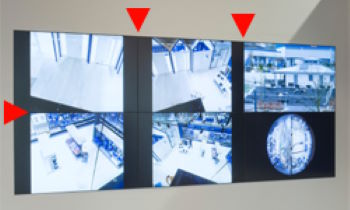
Low Bezel Screens
In order to prevent visual distortion of multi-screen video walls, the use of low-bezel or no-bezel screens is highly recommended. When looking at a video wall with low bezel screens, the bezels almost disappear and the illusion of one single large screen is very effective!
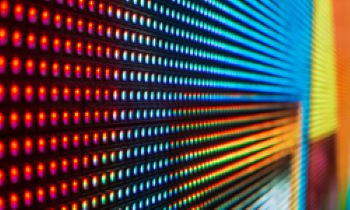
LED Video Wall Controllers
LED matrix video walls come with special controller devices that are used to connect the video wall to a PC. The included driver software lets you capture a certain area of the PC’s screen and then replicates this onto the video wall.
The advantages of FrontFace at a glance:
-
Simple and intuitive control of your video wall Ideal for LED walls and multi-screen walls alike.
-
Access to the full range of functions Videos, images, websites, news tickers and plugins for appointment displays or dashboards.
-
Flexible layout design Play on the entire area or individual segments in a customized way.
-
Compatibility even with specialized hardware For example, low-bezel screens, multi-head graphics cards, or LED controllers.
 It's easy! Give it a try today! - Here is how to get started:
It's easy! Give it a try today! - Here is how to get started:
- Download the fully-functional, free trial version.
- Watch the quick start videos (installation and usage of the software).
- Choose from the optional plugins that are available in case you require extra functionality.
- Learn more about the FrontFace software (pricing, license model) and also about "hardware".